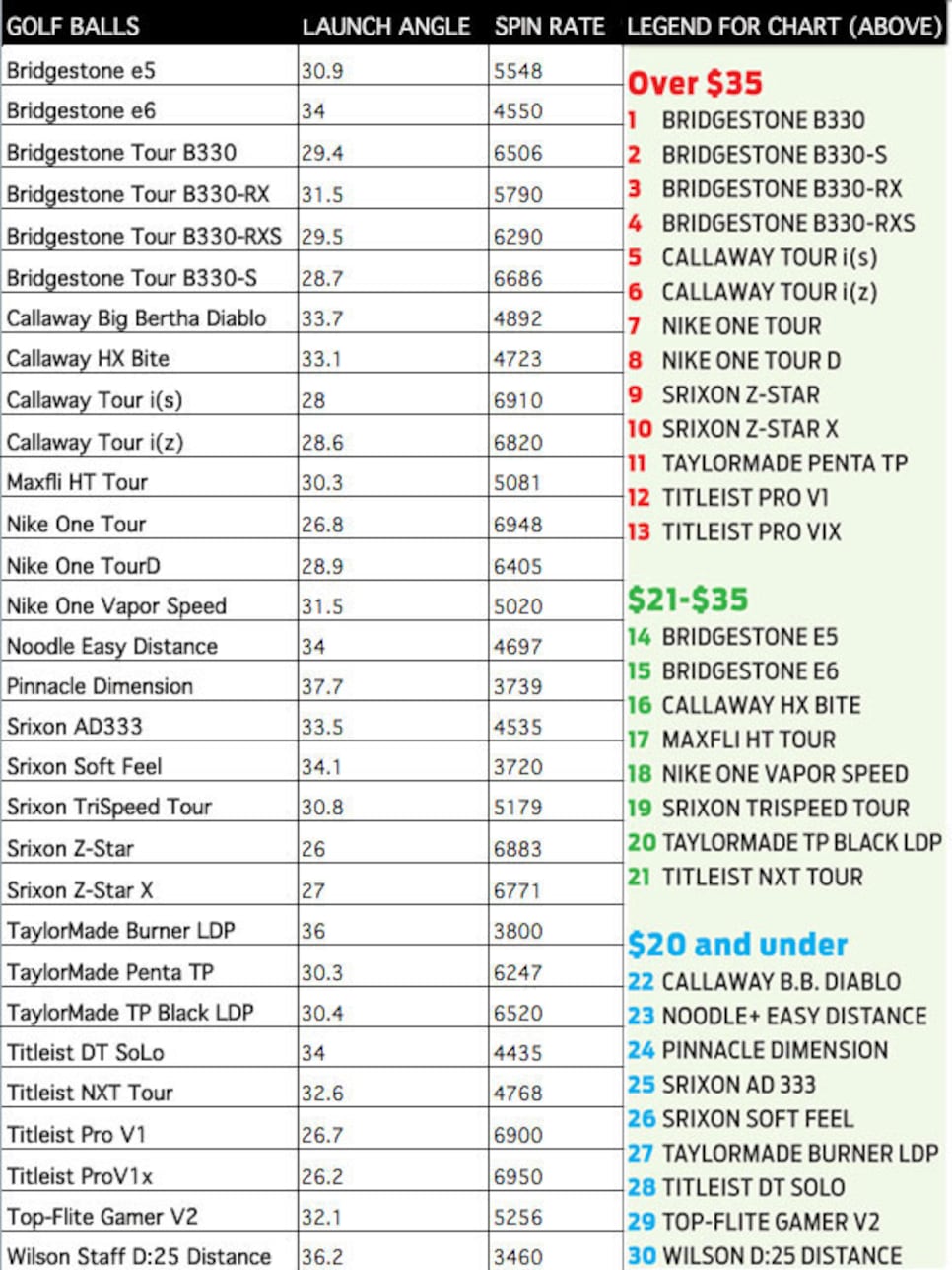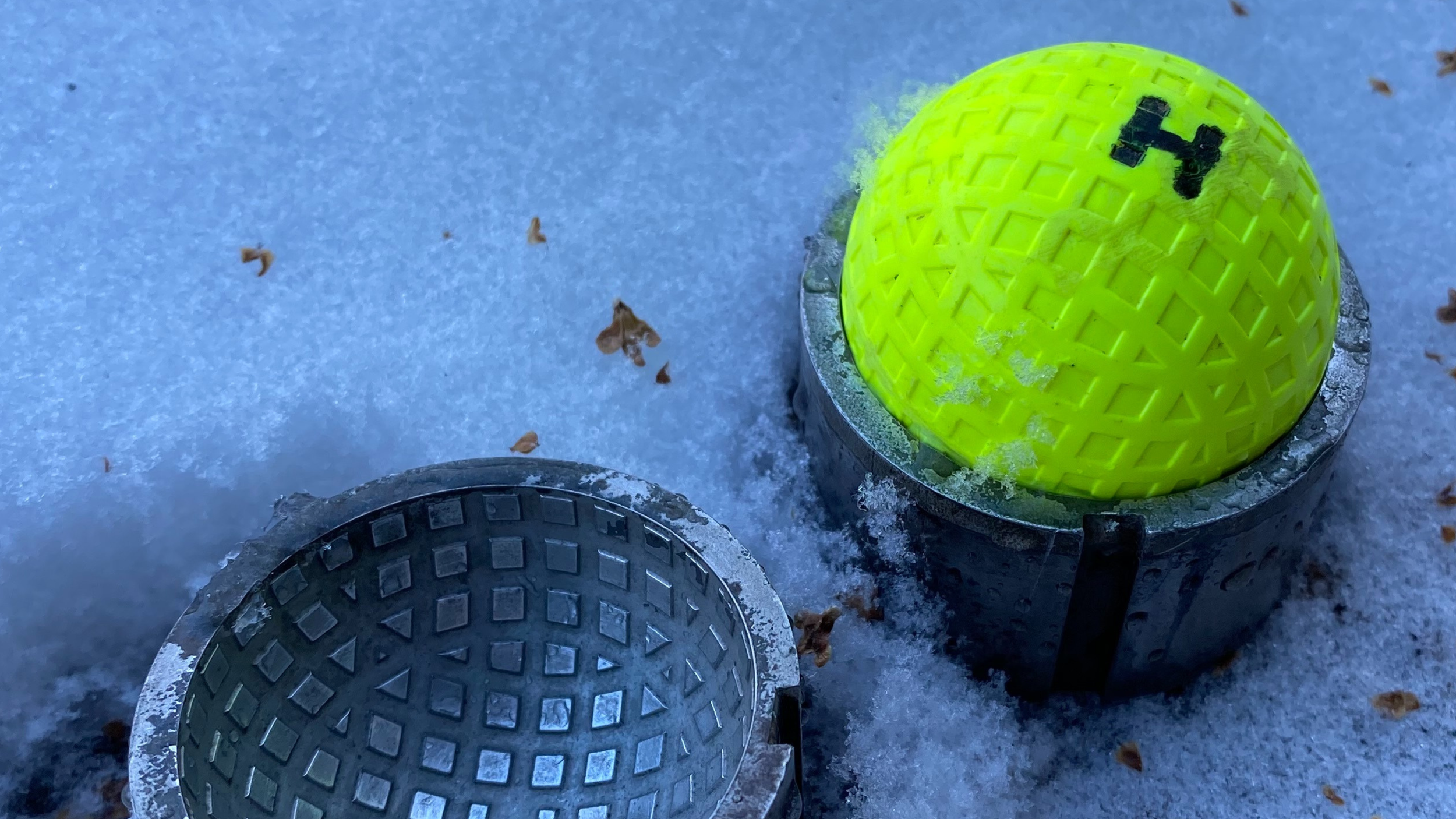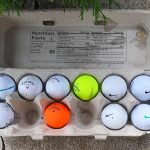Choose golf balls based on your skill level and playing style. Beginners should use two-piece balls, while advanced players might prefer multi-layer balls.
Selecting the right golf ball can significantly impact your game. Two-piece balls, known for their durability and distance, suit beginners well. Advanced players benefit from multi-layer balls offering better control and spin. Factors like swing speed, feel, and greenside control also influence your choice.
For instance, softer balls enhance control and spin, ideal for short-game shots. Higher compression balls benefit players with faster swing speeds. Testing different types helps you find the best match for your game. The right ball can improve performance, making your golfing experience more enjoyable.

Credit: www.golfdigest.com
Choosing The Right Golf Ball
Choosing the right golf ball can significantly impact your game. Golf balls are designed to suit different playing styles and skill levels. Knowing what to look for will help you make an informed decision.
Factors To Consider
Several factors influence your choice of golf ball. Here are the most important ones:
- Compression: Low compression balls are soft and suitable for slower swings. High compression balls are harder, best for faster swings.
- Spin: Low-spin balls reduce hooks and slices. High-spin balls offer better control and stopping power.
- Construction: Two-piece balls offer distance and durability. Multi-layer balls provide control and feel.
- Cover Material: Urethane covers offer better control but are less durable. Surlyn covers are more durable but offer less control.
- Price: Premium balls offer superior performance but are more expensive. Budget balls are more affordable but may lack some features.
Importance Of Ball Fit
Finding the right ball fit is crucial for optimizing performance. Here are some reasons why:
- Distance: The right ball can maximize your distance off the tee.
- Accuracy: A well-fitted ball can improve your accuracy.
- Feel: The right ball will feel better when you hit it.
- Control: Finding the right ball can give you better control on the greens.
- Confidence: Playing with the right ball can boost your confidence.
Understanding these factors helps you choose the best ball for your game. Below is a comparison table to help you make a quick decision:
| Factor | Low Compression | High Compression |
|---|---|---|
| Swing Speed | Slow | Fast |
| Feel | Soft | Firm |
| Spin | Low | High |
| Distance | Moderate | Long |
Choosing the right golf ball is essential for improving your game. Consider these factors and find the ball that fits your needs.

Credit: www.srixon-share.com
Types Of Golf Balls
Choosing the right golf ball can improve your game. Understanding the types of golf balls helps you make an informed decision. Each type offers unique benefits suited to different skill levels and playing styles.
Two-piece Balls
Two-piece golf balls are the most common among casual golfers. They are made up of a solid core and a durable cover. These balls are designed for maximum distance and low spin.
- Solid Core: Provides more distance.
- Durable Cover: Resists cuts and abrasions.
Two-piece balls are ideal for beginners. They are less expensive and last longer. Their durability makes them perfect for practice rounds.
Multi-layer Balls
Multi-layer golf balls offer advanced features. They are made up of three to five layers. These balls are designed for better control and enhanced feel.
- Layered Construction: Improves spin and control.
- Softer Cover: Enhances feel and feedback.
Multi-layer balls are best for experienced golfers. They provide better performance in different conditions. They are more expensive but offer superior playability.
| Type | Features | Best For |
|---|---|---|
| Two-Piece Balls | Durable, Long Distance, Low Spin | Beginners, Casual Players |
| Multi-Layer Balls | Control, Enhanced Feel, Improved Spin | Experienced Golfers, Competitions |
Ball Compression
Ball compression is a key factor in golf ball performance. It affects how far and straight the ball will go. Choosing the right compression helps improve your game.
Low Compression
Low compression golf balls are softer and compress more upon impact. They are designed for slower swing speeds. These balls are easier to control and provide better feel.
- Best for beginners and juniors
- Ideal for golfers with slower swing speeds
- Offers more distance and better control
| Player Type | Swing Speed | Advantages |
|---|---|---|
| Beginner | Slow | More control |
| Junior | Slow | Better feel |
High Compression
High compression golf balls are firmer and compress less upon impact. They are ideal for faster swing speeds. These balls offer more distance and less spin.
- Best for experienced players
- Ideal for golfers with faster swing speeds
- Provides more distance
| Player Type | Swing Speed | Advantages |
|---|---|---|
| Experienced | Fast | More distance |
| Professional | Fast | Less spin |
Spin Rates
Understanding spin rates is crucial when choosing the right golf ball. Spin rates affect how a ball behaves in the air and on the ground. This can significantly influence your overall game performance.
Low Spin Balls
Low spin balls are ideal for players seeking more distance. These balls produce less backspin, which helps them travel further. They are perfect for reducing slices and hooks.
- Increased distance
- Reduced side spin
- More roll on landing
Low spin balls are best for beginners or players with slower swing speeds. They offer better control and more consistency.
High Spin Balls
High spin balls are designed for players who need more control. These balls generate more backspin, enhancing stopping power on the greens. They help in creating a higher trajectory.
- Better control
- Enhanced stopping power
- Higher ball flight
High spin balls are suited for advanced players who want precision. They provide more feedback and are ideal for shaping shots.
| Feature | Low Spin Balls | High Spin Balls |
|---|---|---|
| Distance | More | Less |
| Control | Less | More |
| Stopping Power | Less | More |
Choosing the right ball depends on your playing style and needs. Consider your skill level and what you want to achieve on the course.
Player Skill Levels
Choosing the right golf ball depends on your skill level. Different balls suit different players. This guide helps you find the best ball based on your skills.
Beginners
Beginners should focus on control and forgiveness. Two-piece golf balls are ideal. They offer more distance and are durable. Beginners can also benefit from a low compression ball. It helps achieve a good flight even with a slow swing.
| Ball Type | Benefits |
|---|---|
| Two-Piece Ball | More distance, durable |
| Low Compression Ball | Good flight, easy to control |
Intermediate Players
Intermediate players need a balance of control and distance. Three-piece golf balls are a good choice. They offer better spin and control around the greens. A medium compression ball suits their improved swing speed. This type helps to maximize distance without losing control.
- Three-piece ball – Better spin, improved control
- Medium compression ball – Maximizes distance, retains control

Credit: www.hickoryhacker.com
Weather Conditions
Weather conditions can greatly affect your golf game. The type of golf ball you use can make a significant difference. Below, we explore the best golf balls for different weather conditions.
Cold Weather
Playing golf in cold weather can be challenging. The golf ball tends to lose distance due to the cold air.
- Low compression balls: These balls are softer and compress more easily. This helps them travel farther in cold weather.
- Two-piece construction: A ball with a two-piece construction offers better control in cold weather.
- Surlyn covers: Golf balls with Surlyn covers are more durable in cold conditions.
Choose brightly colored balls. They are easier to spot on frosty or snowy grounds.
Hot Weather
Hot weather can affect the performance of your golf ball. The ball tends to travel farther in the heat.
- High compression balls: These balls are harder and can handle the heat better. They offer more control.
- Multi-layer construction: A ball with multi-layer construction provides better spin and control in hot weather.
- Urethane covers: Golf balls with urethane covers offer better feel and control in hot conditions.
Opt for white or light-colored balls. They are easier to see in bright sunlight.
| Weather Condition | Best Golf Ball Features |
|---|---|
| Cold Weather | Low compression, Two-piece construction, Surlyn covers |
| Hot Weather | High compression, Multi-layer construction, Urethane covers |
Top Brands
Choosing the right golf ball can improve your game. Different brands offer unique features. Let’s explore some top brands in the market.
Titleist
Titleist is known for its high-quality golf balls. Their balls are popular among professionals. They offer a range of options for different players.
- Pro V1: Best for distance and control.
- Pro V1x: Offers a higher flight and spin.
- AVX: Great for a soft feel and low spin.
Titleist balls are durable and reliable. They are a top choice for serious golfers.
Callaway
Callaway golf balls are known for their innovation. They provide options for various skill levels. Their balls focus on performance and feel.
- Chrome Soft: Best for a soft feel and control.
- ERC Soft: Offers distance with a soft touch.
- Supersoft: Ideal for beginners and slower swings.
Callaway balls are designed to improve your game. They are a great choice for all golfers.
Budget-friendly Options
Choosing the right golf ball can enhance your game. But not everyone wants to spend a fortune. There are many budget-friendly options that offer great performance without breaking the bank. Let’s dive into some affordable choices and value packs.
Affordable Choices
Several brands offer quality golf balls at lower prices. These balls provide good performance and durability:
- Wilson Staff Fifty Elite: Known for its soft feel and long distance.
- Srixon Soft Feel: Offers excellent control and a soft touch.
- Callaway Supersoft: Features low compression for a smooth hit.
- Pinnacle Rush: Designed for high energy and long distance.
Value Packs
Value packs are perfect for those who play often. They offer bulk quantities at discounted rates:
| Brand | Pack Size | Price |
|---|---|---|
| Titleist Velocity | 24 balls | $40 |
| Bridgestone e6 | 36 balls | $50 |
| Nike Mix | 50 balls | $45 |
| Top Flite XL | 30 balls | $35 |
These value packs can save money and ensure you always have golf balls ready. This way, you can focus on improving your game without worrying about the cost.
Frequently Asked Questions
How Do I Know Which Golf Ball To Use?
Choose a golf ball based on your skill level, swing speed, and personal feel. Test different types for best results.
What Are The Three Types Of Golf Balls?
The three types of golf balls are two-piece, three-piece, and multi-layer. Two-piece balls offer distance. Three-piece balls provide control. Multi-layer balls combine distance and control.
What Does 60 Compression Mean In Golf Balls?
A 60 compression golf ball is softer, providing more feel and control, especially for slower swing speeds.
Is There A Difference In Golf Balls?
Yes, golf balls vary in material, design, and performance. They affect distance, control, and feel. Choose based on skill level and playing style.
Conclusion
Choosing the right golf ball can improve your game significantly. Consider your skill level, swing speed, and personal preferences. Test different options to find the best fit. Remember, the ideal golf ball can enhance your performance and enjoyment on the course.
Happy golfing!





